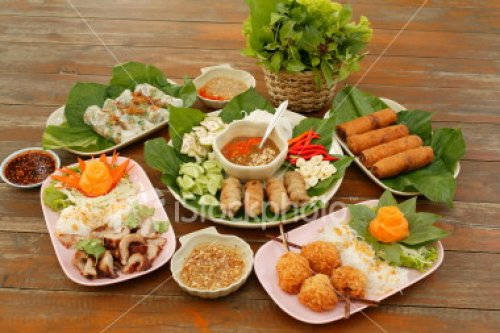Life & English: “Vietnamese cuisine and five fundamental taste elements”
Vietnamese cuisine encompasses the foods and beverages of Vietnam, and features a combination of five fundamental taste elements in the overall meal.
Each Vietnamese dish has a distinctive flavor which reflects one or more of these elements. Known for its balance of five elements, many Vietnamese dishes include five fundamental taste senses: spicy (metal), sour (wood), bitter (fire), salty (water) and sweet (earth), corresponding to five organs : gall bladder, small intestine, large intestine, stomach, and urinary bladder.
Vietnamese dishes also include five types of nutrients: powder, water or liquid, mineral elements, protein and fat. Vietnamese cooks try to have five colours: white (metal), green (wood), yellow (earth), red (fire) and black (water) in their dishes.
 |
Dishes in Vietnam appeal to gastronomes via five senses: food arrangement attracts eyes, sounds come from crisp ingredients, five spices are detected on the tongue, aromatic ingredients coming mainly from herbs stimulate the nose, and some meals, especially finger food, can be perceived by touching. Common ingredients include fish sauce, shrimp paste, soy sauce, rice, fresh herbs, and fruits and vegetables. Vietnamese cooks use ginger, mint, lemon, coriander, cinnamon, chilli, lime, basil leaves…
Traditional Vietnamese cooking is greatly admired for its fresh ingredients, minimal use of oil, and reliance on herbs and vegetables. With the balance between fresh herbs and meats and a selective use of spices to reach a fine taste, Vietnamese food is considered one of the healthiest cuisines worldwide.
(Source: Wikipedia)



















